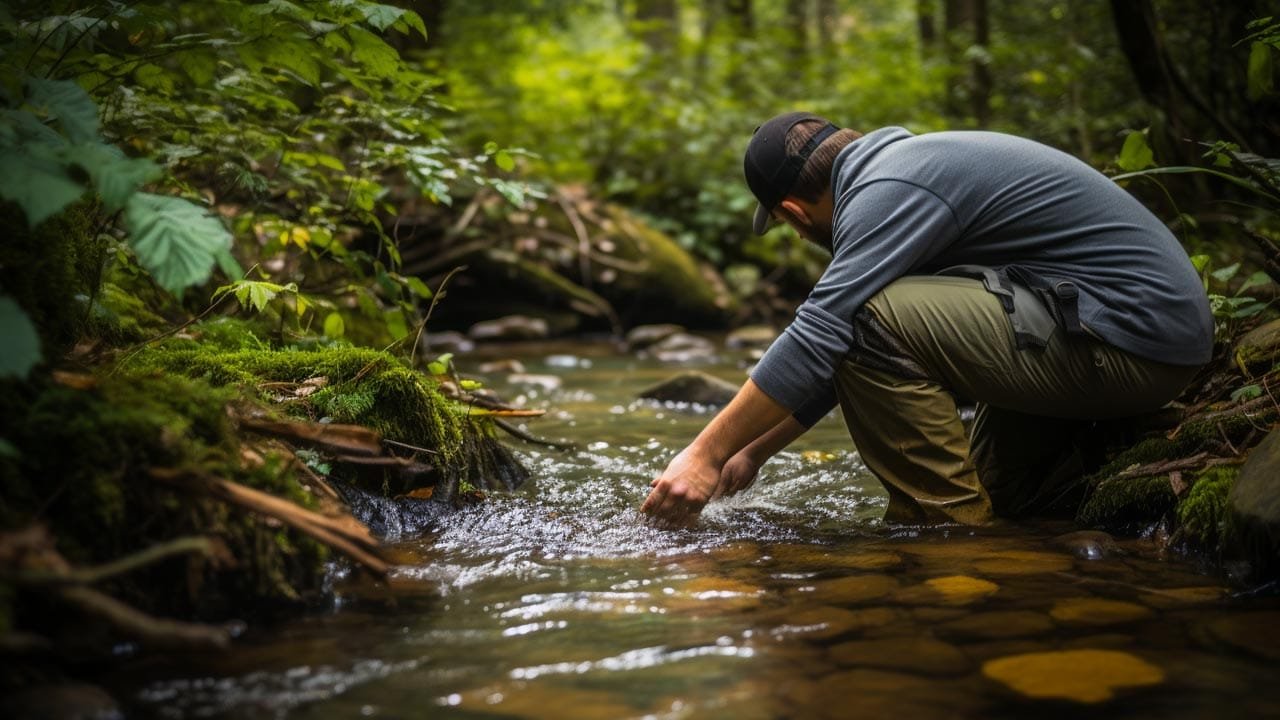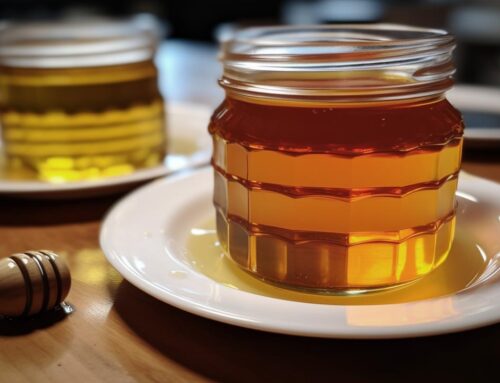You’re about to dive into a quick guide about alternative fish-catching methods, without the traditional gear. Knowing these ancient techniques not only connects us with our past but also serves as a handy survival skill. Stick around, this article won’t just teach you the basics; it aims to make you proficient in techniques as old as time, with a touch of modern insight.
How to Catch Fish Without Fishing Gear?
Table of Contents
- Hand Fishing
- Spearfishing
- Fish Traps
- Using Plants as Fish Toxins
- Improvised Fishing Rod
- Frequently Asked Questions
- Final Thoughts
- Sources
Hand Fishing
Hand fishing, colloquially known as “noodling,” is perhaps the most intimate way to catch fish. It’s just you, your hands, and the fish. While it may seem rudimentary, hand fishing requires a blend of patience, technique, and sheer courage. Let’s delve deeper into this ancient method and understand its intricacies.

The Technique
Hand fishing is more about feel than sight. Fishermen submerge their hands and arms in known fish nesting spots, feeling around for the fish. Once they’ve located one, they insert their fingers into the fish’s mouth or gill and grip it firmly, ensuring it can’t slip away. The next step? Extracting the fish from its hiding spot and pulling it to the surface. A successful catch requires a balance of gentleness (to not scare the fish away initially) and strength (to secure and extract the fish).
Popular Species for Noodling
While you can, theoretically, hand fish for any species, some are more popular (and safer) targets than others. The most sought-after fish for noodling is the catfish, especially in regions like the southern United States. Their tendency to reside in holes and their relatively less aggressive nature makes them prime candidates. Flathead catfish, in particular, are known to weigh upwards of 40 pounds, making the catch all the more exhilarating.
Safety and Precautions
Hand fishing isn’t without risks. The underwater environment can be unpredictable. Here are some safety precautions to consider:
- Buddy System: Always go noodling with a partner. Having someone to watch your back is crucial.
- Know the Terrain: Before you stick your hand in any hole or crevice, ensure you’re familiar with the underwater topography. This familiarity helps in avoiding potentially harmful animals like snakes or snapping turtles.
- Wear Protective Gear: Gloves can help protect your hands from sharp teeth or rocks.
- Avoid Deep Waters: Stick to shallower waters where you can easily stand or get to the surface quickly.
Environmental Considerations
While hand fishing can be seen as a more natural method, it’s essential to practice sustainable fishing. This means not overfishing a particular area, respecting fishing seasons, and releasing any fish that’s not of legal size or isn’t intended for consumption.
The Thrill of the Catch
There’s something undeniably raw and primal about catching a fish with your bare hands. It’s a dance of anticipation, patience, surprise, and triumph—all packed into a single moment. Whether you’re doing it for sustenance, sport, or just the thrill, hand fishing connects you with nature in a way few other activities can.
Spearfishing
Spearfishing is not just a method of catching fish—it’s an art, a sport, and for many, a way of life. This primal technique is a culmination of man’s innate hunting instincts and a profound understanding of marine life. Dive into the world of spearfishing and uncover its deep-seated roots, techniques, and the thrill it promises.
The Spearfishing Gear
While the primitive man might have started with a sharpened stick, spearfishing equipment has evolved dramatically:
- Pole Spears: Essentially long poles with a sharp, barbed tip. They require the hunter to get close to the fish.
- Spearguns: Modern tools that use rubber bands or compressed air to shoot a spear. They offer greater range and power.
- Fins, Masks, and Snorkels: Essential for visibility and maneuverability underwater.
- Wetsuits: Provide protection against cold water, sharp objects, and marine creatures.
Techniques and Tips
Successful spearfishing is a blend of patience, stealth, and precision:
- Free Diving: Most spearfishers prefer free diving (diving without scuba gear) as it’s quieter and less likely to scare off fish.
- Spot and Stalk: Identify your target from the surface, dive silently, approach it, and take the shot.
- Ambush: Stay static near spots where fish frequently pass, wait for the right moment, and strike.
- Refraction Awareness: Water bends light, causing fish to appear closer than they are. Adjusting aim to account for this optical illusion is crucial.
Popular Fish Targets
While spearfishing can target a wide range of species, some fish are particularly sought after due to their size, taste, or challenge:
- Groupers: Found around rock formations and wrecks.
- Barracuda: Fast and agile, they’re a test for any spearfisher’s skills.
- Tuna: Their sheer size and speed make them a prized catch.
- Snappers: Common targets found in tropical waters.
Safety Considerations
Spearfishing is exhilarating but not without risks:
- Shark Encounters: The thrashing of speared fish can attract sharks. It’s essential to remain calm and steadily ascend if a shark is spotted.
- Shallow Water Blackout: Caused by lack of oxygen, it can lead to unconsciousness underwater. Regular breathing and not overexerting are vital.
- Diving with a Buddy: A partner can assist in emergencies and makes the hunt safer and more enjoyable.
Conservation and Ethical Practices
The ocean’s bounty is vast but not limitless. Spearfishers often lead in marine conservation, advocating for:
- Selective Hunting: Targeting only specific species and sizes to ensure sustainability.
- No-Take Zones: Respecting areas where fishing is prohibited to allow marine life to flourish.
- Clean Oceans: Participating in underwater clean-ups and being vocal about marine pollution.
The Adrenaline of the Hunt
Spearfishing is more than just catching fish—it’s about the chase, the strategy, the close encounters with marine life, and the profound connection with the ocean. Each dive is a new adventure, a dance between man and nature, and a testament to the primal hunting spirit that still burns bright.
Fish Traps
Fish traps, the quiet architects of the fishing world, have been utilized by humans for thousands of years. These passive fishing tools leverage the behavior and habits of fish to capture them with minimal human intervention. But what makes these age-old devices still relevant and effective today? Let’s navigate the waters of fish traps and discover their enduring appeal.

Types of Fish Traps
The world of fish traps is vast and varied, with each design tailored to the target species and habitat:
- Basket Traps: Made of woven materials, their funnel-like entrance lets fish in but makes it difficult for them to exit.
- Corral Traps: Large, semi-permanent enclosures made of stakes driven into the seabed. Fish can swim in during high tide but get trapped during low tide.
- Pot Traps: Heavy, cage-like structures often used in deep waters to catch species like lobsters and crabs.
- Net Traps: These are passive nets anchored to the bottom, with a design that directs fish into an enclosure from which they can’t escape.
Setting up a Fish Trap
Using a fish trap effectively requires understanding fish behavior and the local environment:
- Location: Place traps in areas where fish are known to frequent, such as near reefs, river mouths, or migration paths.
- Bait: While some traps rely solely on fish movement, others use bait to lure fish in. The choice of bait depends on the target species.
- Checking the Trap: Regularly check and empty the trap to ensure the caught fish remain fresh and to reduce stress on trapped fish.
Benefits and Limitations
Fish traps offer several advantages:
- Low Maintenance: Once set up, they require minimal supervision.
- Selective Fishing: Properly sized openings can target specific species, reducing bycatch.
- Sustainability: They’re often seen as more sustainable compared to some aggressive fishing methods.
However, they have limitations:
- Yield Variability: The success of traps can be unpredictable, influenced by factors like weather, water conditions, and fish behavior.
- Theft: Unattended traps can be vulnerable to theft or tampering.
Environmental and Ethical Concerns
While fish traps can be sustainable, improper practices can harm marine ecosystems:
- Overfishing: Unregulated use can lead to depletion of fish stocks.
- Bycatch: If not designed correctly, traps might capture unintended species.
- Habitat Disruption: Carelessly placed traps can damage sensitive habitats like coral reefs.
Responsible trapping practices, periodic checks, and adhering to local regulations can mitigate these concerns.
Craftsmanship and Cultural Significance
Fish traps are not just tools—they’re cultural artifacts. The intricate designs, weaving patterns, and materials used often carry the legacy of ancient traditions. In many cultures, the knowledge of crafting and using these traps is passed down through generations, symbolizing a deep connection between communities and their aquatic environment.
Using Plants as Fish Toxins
Mother Nature, in her infinite wisdom, has bestowed upon us a diverse array of plants with unique properties. Among them are plants that can stupefy fish, making them easier to catch. Utilizing these plants as fish toxins has been a traditional method employed by indigenous communities for centuries. While this method is fascinating, it also raises questions about its ecological impact and ethical implications.

How It Works
The active compounds in these plants affect the fish’s gills, reducing their ability to extract oxygen from water. It doesn’t necessarily kill the fish immediately but stupefies or immobilizes them. Once affected, fish become lethargic or float to the surface, where they can be easily collected.
Common Plants Used
Different cultures have identified various plants with ichthyotoxic properties, suitable to their local environment:
- Tephrosia Vogelii: Found in Africa, its crushed leaves and seeds are used by local communities for fishing.
- Derris elliptica (Tuba root): Indigenous to Southeast Asia, the roots contain rotenone, a potent fish toxin.
- Barringtonia asiatica (Fish Poison Tree): The seeds of this Pacific island tree are used to poison fish.
- Lonchocarpus spp.: Found in Central and South America, its roots and bark have been traditionally used for fishing.
Pros and Cons
Pros:
- Simplicity: Requires minimal equipment and capital.
- Efficiency: Can result in the capture of multiple fish at once.
Cons:
- Non-selectivity: All fish within the affected area get exposed, leading to potential overfishing.
- Residue: Some toxins might leave harmful residues in the water, affecting the ecosystem.
Ethical and Environmental Considerations
Using plants as fish toxins is undeniably effective, but it isn’t without controversy:
- Ecosystem Impact: Repeated and excessive use can disrupt aquatic ecosystems, harming non-target species.
- Human Health: Consumption of fish caught this way might pose health risks if the toxin residues remain.
- Sustainability: Non-selective fishing might lead to the depletion of fish stocks.
While this method is deeply rooted in tradition and culture, it’s crucial to approach it with respect for nature and sustainable practices. This means understanding the local ecosystem, using the technique judiciously, and ensuring minimal harm.
Improvised Fishing Rod
Have you ever found yourself by a serene lakeside, staring at the gentle ripples, and thinking, “I wish I could fish right now!” only to remember you left your fishing gear at home? This is where the art of crafting an improvised fishing rod comes into play. Using basic materials from your surroundings, you can construct a makeshift fishing rod that may not win any design awards, but will certainly catch fish!
Choosing the Right Stick
Your makeshift rod’s backbone will be a sturdy stick. Here’s how to pick the right one:
- Length: Opt for a stick that’s about 6-7 feet long. This offers good casting distance and control.
- Flexibility: It should have some bend to it but not so much that it breaks under the weight of a decent-sized fish.
- Strength: Ensure the stick is free from rot. Test its strength by giving it a few firm bends.
Creating the Line and Hook
- Line: Use any available string-like material. This could be shoelaces, threads from clothing, or even dental floss. If near vegetation, certain plant fibers can be twisted together to form a sturdy line.
- Hook: While nothing truly replaces a sharp metal hook, you can fashion one from a thorn, bone, or even a bent safety pin. Ensure it’s sharp enough to pierce the fish’s mouth.
Putting It All Together
- Tie the Line: Attach one end of your line to the tip of the stick. Ensure it’s tied securely. The line’s length should ideally be about the same as the rod or slightly longer.
- Attach the Hook: At the other end of the line, tie on your makeshift hook. Make sure it’s secure to prevent loss when a fish bites.
- Bait: Use worms, insects, or any small creatures you can find as bait. If you have any food scraps, those could work too!
Fishing with Your Improvised Rod
Fishing with an improvised rod isn’t too different from using a regular one:
- Casting: Due to the rod’s simplicity, you may need to get closer to the fish than usual. Aim for calm spots in the water where fish are likely to be.
- Patience: Just as with standard fishing, patience is key. Wait for the fish to bite, then give a sharp tug to set your makeshift hook.
- Reeling In: Pull the fish in gently, using a combination of the rod’s bend and pulling the line with your free hand.
Frequently Asked Questions
Final Thoughts
Catching fish without modern gear might sound daunting, but with the techniques highlighted above, it’s more than feasible. The most crucial lesson? Adaptability. Whether you’re noodling with your hands or crafting a basic rod, it’s all about understanding the fish, their environment, and using available resources effectively. The beauty of these methods lies in their simplicity, their connection to our ancestral roots, and the sheer thrill they offer. Happy fishing!
Sources
- Handfishing basics and safety
- Spearfishing techniques and history
- Fish traps and their variations
- Plants as fish toxins







Leave A Comment